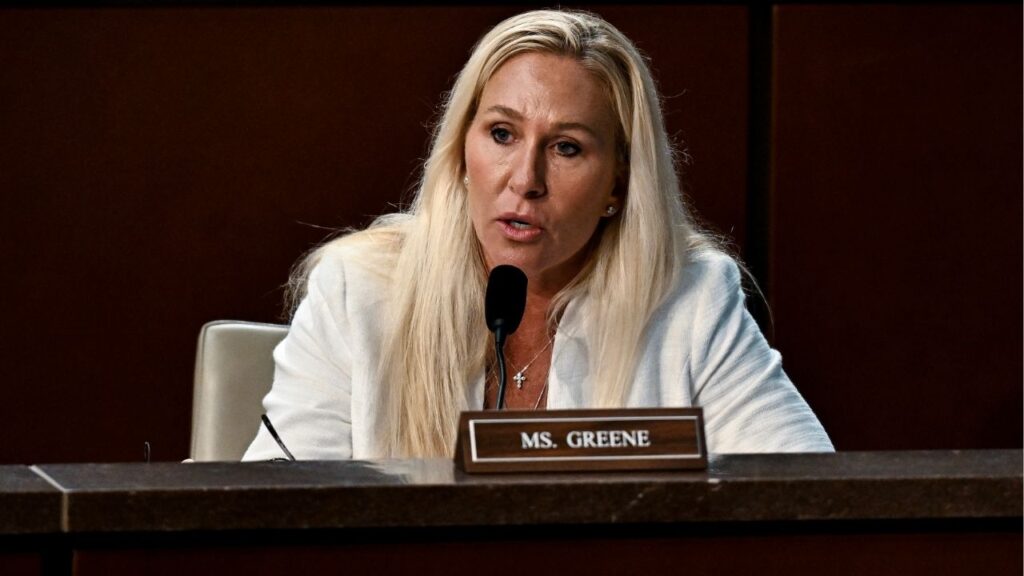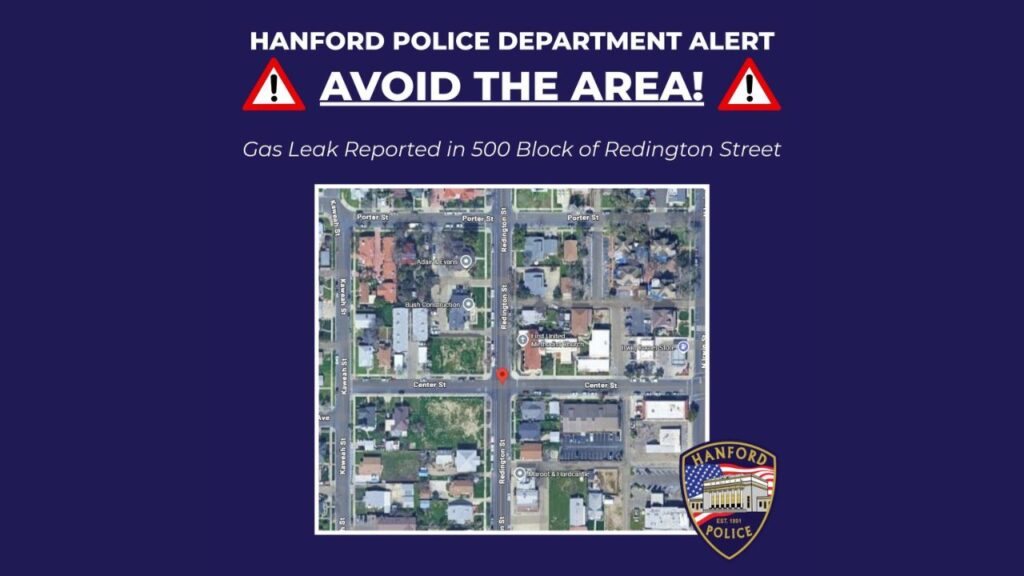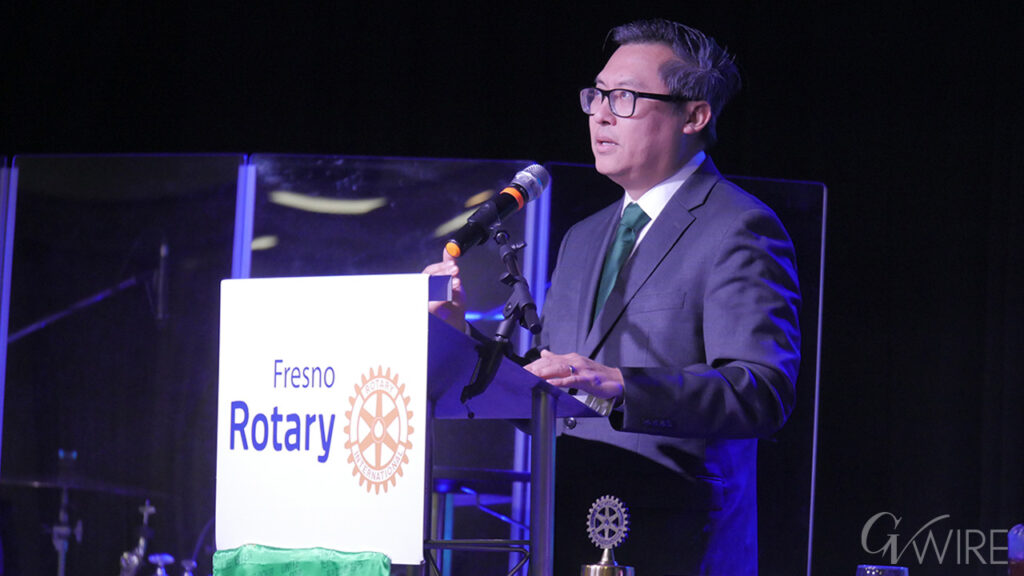The city of Fresno is trying to balance environmental and industrial interests in its South Central Specific Plan, a document outlining land use in that part of town. (GV Wire Composite/Paul Marshall)

- Both environmental activists and business interests oppose a land use plan for south central Fresno.
- The plan, which reduces industrial land uses for existing businesses and vacant land, will be heard by the city council.
- Business owners contend plan changes constitute eminent domain and contemplate a lawsuit.
Share
|
Getting your Trinity Audio player ready...
|
Despite neither community advocates nor business interests supporting a plan dictating land use in south Fresno, a top city official pressured planning commissioners Thursday to send the document to the city council.
Planning Commission Chair Peter Vang agreed with other commissioners that the city’s South Central Specific Plan required more work.
Some residents and community groups said it didn’t do enough to protect against industrial development. Many business and property owners said changes to vacant land and existing businesses devalued their investments and hampered long-existing businesses. Electric vehicle mandates in the plan are also more stringent than state standards.
Disagreements between business and environmental interests demonstrate the balancing act the city had to do with competing interests, said Sophia Pagoulatos, director of long-range planning with Fresno.
But despite the opposition to the plan, Planning and Development Department Director Jennifer Clark said it needed to be sent to the city council and be heard in December.
“We would ask that you move it forward at this time,” Clark said. “It’s been in the process for over five years and it’s ready for the city council to consider it.”
Related Story: 71% of Fresno Residents Say Industrial Development Is Good for City: Survey
Family Had Entire Property Downzoned
Heather Muell’s family’s property, adjacent to the Amazon facilities in south Fresno, would all be downzoned as part of the specific plan. One parcel is being changed to residential because of a single farmhouse on the property; the rest is changing to business park, which favors office development. A 1,000-foot buffer zone around residential areas further restricts usages on their land.
In the 1960s, when Muell’s family purchased land at Central and Orange avenues, her grandfather farmed it, seeing the potential for industrial zoning when infrastructure came, she said. Muell said they’ve long paid property taxes based on the industrial zoning designation.
“It’s a small chunk,” Muell said. “For our family, it’s significant.”
When Northpointe Business Park began getting developed — millions of square feet of warehouses have now gone up — investment potential began to show. The Muell family then started working in earnest to find a business for the land.
Muell’s father attended every meeting of the specific plan in 2019 and 2020. At those meetings, city representatives heard concerns from stakeholders, Muell said, but zoning changes were not discussed. He didn’t know about potential changes until he received a letter from the city a few weeks ago.
In 2021, Muell’s family met with different businesses, including food processing giant Olam to build there. Muell said every company backed out because of regulations they had to go through to build. Muell was told the city was not issuing new business permits until the environmental impact report was completed.
Companies wanted something sooner, she said. Olam ended up building their plant in Phoenix, she added.
“They couldn’t cut through the red tape,” she said. “They were ready to go now, and they did. They went to Phoenix and they’re doing it — they just didn’t do it here.”

60% Reduction in Available Industrial Land
In 2019, the Fresno City Council initiated the plan to balance environmental and business interests in the 5,600-acre plan area that spans from California Avenue in the north to American Avenue in the south, and west to east from Martin Luther King Jr. Boulevard to Peach Avenue.
Within the area are 400 dwelling units and Orange Center Elementary School. The area also hosts 440 businesses with 22,000 full-time equivalent jobs, according to a study from business group INVEST Fresno.
City leaders since the 1950s have set the area aside for industrial growth, Pagoulatos said.
Heavy industrial can mean anything from manufacturing to slaughterhouses and food processors. Light industrial tends to be warehouses and logistics businesses.
The 2014 General Plan maintained the industrial designation. More recently, the nearby Southwest Fresno Specific Plan reaffirmed the use of that area when it drastically reduced industrial zoning.
Authors of that plan said industrial growth should be prioritized in south central, where it has historically been directed.
Seeking to limit the environmental impact of industrial uses, the plan reduces heavy industry by 17%, Pagoulatos said. Changes go to light industrial, business park, or in some cases, like the Muell’s, residential.
Industrial uses in a business park designation need a special permit. That can be a long and costly process, if even approved after public comment and city council hearings.
Relevant to future business prospects, though, is the reduction in available land.
The plan reduces the 1,085 acres of heavy industrial zoning on vacant land to 431 acres, according to city documents. The plan instead adds 486 acres to business park, which favors office construction.

Plan Changes Affect Fresno’s Second-Oldest Business
The impact of the plan goes beyond vacant land. Brandon Craighead of Penny Newman Grain Co. — the second oldest company in the city — said the plan reduces zoning on portions of their property. Existing uses get grandfathered in so long as the use remains constant. But expansions and use changes could be limited or come with costly mitigation measures.
“The downzoning of our facility will restrict the use of our facility making it very difficult, nearly close to impossible to meet the standards of California’s agricultural industry,” Craighead said.
Greg Obloy, vice president of Crown Enterprises, flew in from Michigan to attend the meeting when he found out about potential changes to the company’s property.
After high-speed rail forced the logistics company to move, they began working with the city in 2015 to stay in the area, eventually buying a 15-acre parcel on Cherry Avenue.
“We didn’t spend $2 million on dirt and $300,000 in soft costs on a hope and a prayer,” Obloy said. “We’re very disappointed with this.”
Community Advocates Say More Health Protection Needed
Residents and community representatives said the plan needed to go further.
Leslie Martinez, community engagement specialist with Leadership Counsel for Justice and Accountability, acknowledged the efforts from the city in protecting residents. She interpreted for two different speakers who said they and their families suffer from asthma.
“There’s enough contamination, our kids have asthma, and the truth is their future is not going to be great is what I suspect,” said Bertha Castillo, through Martinez. “I have a son with cancer, I have a kid with asthma and I just want things to be better for my community.”

In addition to zoning changes, the plan also limits uses within 1,000 feet of homes, daycares, and other sensitive uses. Of the 5,600 acres in the plan area, the 400 residences constitute .07 residences per acre. But 50% of land in the area falls within those buffer zones, according to Ethan Smith, chairman of INVEST Fresno.
Martinez said because of the need to protect people living there, that should be expanded.
“This is a great start, but it needs to go further if we’re serious about protecting people and schoolchildren,” Martinez said.
Vacant industrial land within a buffer zone cannot include rendering plants or slaughterhouses. A special permit could be required for other industrial uses despite being zoned for that use.
The plan also creates electric vehicle mandates more stringent than many state standards. Business owners said electric vehicles are not adequate for many uses.
McKay Duran of the Central California Food Bank said electric technology doesn’t suffice for refrigerated trucks especially.
“These measures will fundamentally alter our operations, threating our ability to be there for those who need us most,” Duran said.
Pagoulatos said a process exists to allow special exceptions.
Lawsuit Pondered by Business Interests
Commissioner Linda Calandra asked if the potential reduction in land value constitutes eminent domain.
“You are taking away the value of their property — there should be some compensation, it’s almost like eminent domain,” Calandra said.
Pagoulatos said as long as the land maintains some value, it doesn’t constitute a taking.
Some business owners wondered about eminent domain as well. They said a class-action lawsuit could be possible if the plan was approved.
“They’re taking value from owners and not reimbursing them in any way,” Muell said. “That seems wrong. That seems really wrong.”



















